- Home
- Alison Weir
Elizabeth of York Page 5
Elizabeth of York Read online
Page 5
According to Philippe de Commines, in 1475 a lord entertaining Louis XI of France by impersonating Charles the Bold, Duke of Burgundy, had the duke asserting that Edward’s father had been an archer called Blaybourne; this was in the wake of Edward making a profitable treaty with Louis, Charles’s enemy, and it sounds more like a joke or malicious gossip than a statement of fact. In 1478, when Clarence’s allegation about Edward’s bastardy was raised in Parliament, the King publicly refuted it. In 1483, when Edward’s youngest brother, Richard, Duke of Gloucester, raised the matter again and defamed his mother in a bid to seize the throne,51 Londoners gave the allegation such short shrift that he quickly had to come up with another pretext.
For some the Blaybourne story is bolstered by a tale told by Dominic Mancini, the Italian who visited England in 1483 and wrote that year: “the story runs”—which suggests he gave it little credence—that in 1464, outraged at Edward IV’s marriage to Elizabeth Wydeville, Cecily Neville “fell into such a frenzy that she offered to submit to a public inquiry, and asserted that Edward was not the offspring of her husband, the Duke of York, but was conceived in adultery, and therefore in no wise worthy of the honor of kingship.” We do not know how Mancini learned of Cecily’s outburst of nearly twenty years earlier, but his account reads as if he himself knew it was merely farfetched gossip. Certainly this was a strange claim for the King’s mother to make, however angry: one that compromised her son’s title to the throne, her own reputation, and the rights of any grandchildren born of the King’s marriage; and it seems inconceivable that she would publicly brand herself an adulteress. Maybe Cecily, who was used to “ruling the King as she pleases”52 and was incensed at his misalliance, was so hysterical with rage that she said the first thing she could think of that could hurt him—if, of course, she said anything at all, for Mancini probably picked up on propaganda deliberately circulated in 1483 in support of Richard of Gloucester’s claim to the throne: the official line then was that Richard was the only true surviving son of his father.
Gloucester, short, slight, and dark, was said to have resembled Richard, Duke of York, in looks; Edward, tall and fairer in coloring, did not. This was said to be evidence that he was not York’s son. But Edward was very like his sister Elizabeth in appearance, if the similarity between his portraits and her tomb effigy in Wingfield Church, Suffolk, is anything to go by. Possibly they both favored their mother.
Finally, there is the matter of dates. If Edward was a full-term baby, conception would probably have taken place between August 2 and 10, 1441; but if he was premature, obviously it would have occurred later. York was campaigning in Pontoise from July 14 to August 21, after which he returned to Rouen in triumph. It is well within the bounds of probability that, in the flush of reunion, he got his wife pregnant with a child who was born prematurely. That is the likeliest theory, given the dates and the quiet, possibly hurried, christening. The fact that Edward survived to be a healthy adult may be due to the fact that he was only about two weeks premature. A margin of what might have been only eleven days cannot have any credible bearing on his paternity.
Without any evidence of her whereabouts, it cannot just be assumed that Cecily was staying in Rouen during the Pontoise campaign. The diverse birthplaces of her twelve children show that she often traveled around with her husband, which suggests that they were close and wanted to be together. Even if York was a hundred miles away, it was possible for a rider to cover that distance in a short time; in 1202, for example, King John marched an army more than eighty miles in two days. Cecily could have traveled to be near her husband, even if he could not visit her.
The most crucial piece of evidence is to be found in Cecily’s will, made shortly before her death in 1495, in which she refers to her husband York as “father unto the most Christian prince my lord and son, King Edward IV.”53 Her other sons, George and Richard—the ones who had impugned her reputation by publicly alleging her adultery—are not mentioned in that document.54 It is unlikely that the devout Cecily, knowing she was soon to face divine judgment, would have set forth such a falsehood in her last testament.
At the time of Edgecote, Elizabeth Wydeville was visiting Norwich with at least two of her daughters, of whom Elizabeth was probably one. They had been received with pageants, banners, songs, and ceremony, and were lodged in the house of the Friars Preachers. There they received the dreadful news that Warwick had not only emerged victorious at Edgecote, but had taken the King prisoner and had the Queen’s father, Lord Rivers, and her brother, John Wydeville, beheaded without trial.
Having a grandfather beheaded was shocking enough—although, at three, one hopes that Elizabeth was spared too many details—but the impact on her mother must have been profound, and it was compounded by the arrest that same month of the Duchess Jacquetta, who was accused of witchcraft. It was said she had used leaden images to bring about her daughter’s marriage to the King and encompass Warwick’s destruction. There was a political agenda to this, of course, but Jacquetta had sufficient friends to take up her cause with the King’s council. Soon afterward the case was dismissed because a crucial witness refused to come forward to testify to having seen the images, but this unpleasant episode, and Rivers’s execution, showed how far Edward’s enemies were prepared to go to bring down the Wydevilles. Nevertheless, during Warwick’s brief spell of power in August 1469, the Queen and her children were left unmolested, although Elizabeth Wydeville was permitted to keep only “scant state.”55
Before long, however, Edward was a free man. There was little support for Warwick, and early that autumn problems on the Scottish border engaged his attention and his resources, forcing him to release the King. In September, Edward entered London in triumph, then began scheming to regain the support of the nobles. Although Elizabeth was not yet four years old, he had her proclaimed his heiress apparent—a move calculated to upset Clarence56—and dangled the carrot of her hand in marriage to his advantage. It was the fate of princesses to be the subject of alliances beneficial to the realm and to their royal fathers, but Elizabeth’s marriage was a matter of prime importance, as she was the heiress to the throne until such time as the Queen bore a son. She might normally have been affianced to some great foreign prince, or the heir to a throne, but in the wake of the rebellion, urgent political considerations dictated the King’s policy. In the autumn of 1469, in a bid to retain the loyalty of a powerful ally, Edward created Warwick’s brother, John Neville, Marquess of Montagu, and offered Elizabeth as a bride for Neville’s five-year-old son George—all in the hope that, were he himself to be killed, Neville would ensure that Elizabeth and George were crowned before Clarence could seize the throne. But this proposed marriage did not weigh heavily in the balance with Warwick.
By Christmas, Warwick and Clarence had been pardoned and were back at Westminster. But Edward clearly did not trust them, and still suspected Clarence of having designs on his crown. On January 5, 1470, Elizabeth was formally betrothed to George Neville, whom Edward created Duke of Bedford the same day.57 It is unlikely, however, that he ever intended that the marriage should go ahead; it was a desperate measure born of a desperate situation, and scant faith was placed in the union of these two children ever taking place.58
By the spring of 1470 the King had regained control of the government and denounced Warwick and Clarence as traitors. They fled abroad, only to begin plotting with Louis XI for the restoration of Henry VI. Louis, known as “the Universal Spider” because of the skill with which he manipulated his enemies, was always eager to exploit Edward IV’s troubles, and persuaded the exiled Margaret of Anjou into an unlikely alliance with Warwick.
On Friday, June 8, 1470, the Queen arrived with Elizabeth, then four, at Canterbury to join the King (who had come two days earlier) for a great celebration of the feast of Pentecost. Prior John Oxney and his monks received them all at the great door of the Abbey of St. Augustine, and a service of thanksgiving followed. Elizabeth’s uncle, Anthony Wydeville, Earl
Rivers, arrived the next day, with other distinguished guests, and on the Sunday, the princess went in procession with her parents to High Mass, celebrated by Thomas Rotherham, Bishop of Rochester. Monday was spent at the abbey, attending High Mass and Vespers, then the Queen traveled back to London with Elizabeth, while Edward journeyed east to inspect the fortifications at Dover and Sandwich before rejoining them.59
During her visit to Canterbury, Elizabeth would surely have seen the shrine of St. Thomas Becket, the martyred archbishop, which was adorned with jewels and valuable offerings, illuminated by candles, and surrounded by a floor bearing the imprints of the knees of thousands of pilgrims. It would have made a lasting impression on a young child, especially if she was told of the many miracles the saint was said to have wrought. There is evidence that Elizabeth’s devotion to St. Thomas remained with her to the end of her life.60
In July, wanting to consolidate his alliance with Margaret of Anjou, Warwick urged the marriage of his fourteen-year-old daughter, Anne Neville, to Prince Edward of Lancaster. But Margaret was reluctant because, she said, “she should find a more profitable advantage with England. And indeed, she showed unto the King of France a letter which she said was sent to her out of England last week, by the which was offered to her son my lady the Princess.”61
Elizabeth was, of course, betrothed to George Neville, and Edward IV would not break that betrothal until later, when George’s father had gone over to Warwick;62 but marrying Elizabeth to Edward of Lancaster would have been one way to prevent the marriage with Anne Neville, and might have averted a further war between Lancaster and York. No doubt Margaret envisaged her son being acknowledged as Edward IV’s heir, for want of one of his own, and perhaps ascending the throne on the King’s death. But Queen Elizabeth was expecting another child that might this time be a son, and there is no other evidence that Edward IV made such an approach to Margaret at this time;63 her remark was probably a bluff, intended to extract better terms from Warwick. In July 1470, after King Louis and Warwick had put pressure on Margaret, her son married Anne Neville.
Elizabeth was four when her father was forced to flee his realm. In September 1470, as he prepared to deal with an invasion by the combined forces of Warwick and Queen Margaret, she and her sisters were taken by their mother to the Tower of London for safety. Anticipating such a crisis, the Queen had arranged for the Tower to be “well victualed and fortified.”64 Elizabeth Wydeville was then seven months pregnant with her fourth child. A luxurious chamber in the royal apartments was made ready for her confinement, but she was destined never to use it, for when Warwick invaded, his brother Montagu deserted Edward, and early in October the news was cried in London that the King and his youngest brother Gloucester had fled to the Low Countries with only the clothes on their backs. Hard on the heels of this came tidings that Warwick and Clarence were marching on London.
It must have been bewildering for Elizabeth and her sisters to be hurried in secrecy and silence by their mother and grandmother into a barge in the middle of the night and rowed upstream to Westminster. There, they made their way past the palace to Westminster Abbey, where the distraught Queen “registered herself as a sanctuary woman.”65 She was eight months pregnant and must have been “almost desperate of all comfort”66 to have come to a place like St. Peter’s Sanctuary.
The sanctuary building was situated in the northwest corner of the abbey precincts, at the end of St. Margaret’s churchyard, where Westminster Guildhall now stands. It had been built in the eleventh century by King Edward the Confessor, and was constructed of thick stone walls strong enough to withstand a siege; they were demolished only with difficulty in 1750, by which time the practice of claiming sanctuary had long fallen into disuse. One stout oak door led into a cruciform-shaped interior consisting of two chapels, one above the other. Debtors used the upper level, common felons the lower. At Westminster, the right of sanctuary extended to the adjoining close and churchyard.
Since the seventh century, anyone fleeing justice, oppression, or the hostility of those in power could claim the right of sanctuary in a consecrated place, for there was a strong belief that holy ground was inviolable, and that anyone forcibly removing someone from sanctuary was guilty of sacrilege. Violation of the protection of sanctuary was punishable by excommunication.
The right of sanctuary was originally confined to churches, but later its limits were extended to church precincts, and sometimes even to a larger surrounding area. By Norman times there were two kinds of sanctuary in England: a general right of sanctuary conferred on every church, and a peculiar one granted by royal charter. General sanctuaries afforded forty days’ protection only to those guilty of felonies. A convicted felon who sought sanctuary was afforded protection for thirty to forty days, after which, subject to certain severe conditions, he had to leave the kingdom within a specified time and take an oath not to return without the King’s leave. Peculiars gave immunity for life, even to those accused of high or petty treason. The latter was enjoyed by at least twenty-two churches, including Westminster Abbey, which was the foremost sanctuary in England. Elizabeth was to spend, in total, more than a year of her life here.
The sanctuary was almost deserted when Elizabeth Wydeville arrived with her three daughters and her mother67 and placed them and herself in the charge and protection of Thomas Milling, the Abbot of Westminster. A kindly, hospitable man, he would not hear of them lodging in the common sanctuary building, where they would rub shoulders with murderers and thieves; instead, he insisted they stay as his guests in his house, Cheyneygates, by the West Door of the abbey, placing the three best rooms at their disposal and providing the Queen with several items “for her comfort.”
Parts of medieval Cheyneygates survive today, notably two splendid rooms over the entrance to the cloisters—sufficient, despite wartime bombing and heavy restoration, to show that the Queen and her daughters were luxuriously housed while in sanctuary—and the sumptuous Jerusalem Chamber, the abbot’s principal apartment, then hung with rich tapestries, which was one of the rooms assigned to Elizabeth Wydeville. All date from the fourteenth century, making Cheyneygates the oldest surviving medieval house in London. The rest of the house, which now comprises the Deanery, has been rebuilt. The stone fireplace in the Jerusalem Chamber is Tudor, with a later overmantel, but the original ceiling displays Richard II’s crowned initial. The paneling is nineteenth century. Henry IV, first sovereign of the House of Lancaster, had died in this room in 1413. Now it was to serve as the Queen’s great chamber; she also had use of the abbot’s great hall with its minstrels’ gallery, a privy chamber, probably used as a bedchamber, and the courtyard, which would afford Elizabeth and her sisters their only means of enjoying fresh air for some months to come. Had they but known it, they were effectively prisoners in a gilded cage, for their mother dared not leave—and with good reason.
Law and order had broken down in London, which seethed with unrest as felons left sanctuary to infest the streets, prisons were broken open, and mobs looted and rioted unchecked—all in the name of Warwick. The Queen, alarmed, immediately sent Abbot Milling to entreat the Lord Mayor and aldermen of London not to resist Warwick’s forces or do anything to provoke him, lest he force his way into the abbey “to despoil and kill her.”68
On October 6, Warwick and Clarence entered the City and took control of the Tower, whereupon the Lord Mayor had no choice but to come to terms with them. They speedily restored order and proclaimed the feeble Henry VI to the throne once more, transferring him from his prison in the Tower to the opulent rooms vacated by the Queen. He would be formally restored to the throne on October 30.
Warwick had little reason to love “the Queen that was,”69 but he did not persecute women. Instead, he issued a proclamation forbidding his followers to defoul churches and sanctuaries in London and elsewhere, upon pain of death.70 Despite this, the Queen evidently felt it was safer to stay in sanctuary with her daughters for the present; with the situation so volatile and
uncertain, no one could predict how long they would have to remain there. Worse still, she was “in great penury, forsaken of all her friends”71 and “in great trouble,”72 lacking even “such things as mean men’s wives have in superfluity.” A London butcher, John Gould, came to her rescue. He loyally donated “half a beef and two muttons weekly for the sustention of her household.” A kindly fishmonger provided victuals for Fridays and fast days. As the Queen neared her confinement, Elizabeth Greystoke, Lady Scrope, was appointed by Henry VI’s council to wait on her, and paid £10 [£5,000] for her services.73 Marjory (or Margaret) Cobb, who had delivered Princess Cecily and been rewarded with a pension,74 was brought in to act as midwife, and the Queen’s own physician, Dr. Dominic de Sirego, was permitted to attend her.
On the feast of All Saints, November 1, 1470,75 in Cheyneygates, the Queen “was delivered of a son, in very poor estate.”76 It seemed ironic that the long-awaited heir should be born during his father’s exile, yet “from this circumstance derived some hope and consolation for such persons as remained faithful in their allegiance to Edward.” King Henry’s adherents, however, “thought the birth of the child of no importance.”77
The little prince was christened in the abbot’s house by the sub-prior, “without pomp,” and “with no more ceremony than if he had been a poor man’s son”; the Duchess of Bedford and Lady Scrope were godmothers at the font, while the abbot and the prior, John Eastney—in the absence of anyone of higher rank—stood as godfathers. Young Elizabeth bore the chrisom—the robe put on a child after baptism to symbolize its purification from sin. The infant was named Edward, after his father.
Elizabeth and her mother and siblings had “a long time abode and sojourned at Westminster”: they were to endure another five months in sanctuary, “in right great trouble, sorrow, and heaviness.” The Queen was painfully aware that her son might be seen as a threat to the new régime. She knew that “the security of her person rested solely on the great franchise of that holy place.” But Warwick left them largely unmolested, and the Queen “sustained” her ordeal “with all manner of patience belonging to any creature, and as constantly as ever was seen by any person of such high estate to endure.”78 Yet “what pain had she, what labor and anguish did she endure? To hear of her weeping it was great pity,” and “when she remembered the King she was woe”79—and doubtless Elizabeth was too, witnessing her mother in such distress.

 Richard III and the Princes in the Tower
Richard III and the Princes in the Tower Britain's Royal Families: The Complete Genealogy
Britain's Royal Families: The Complete Genealogy The Lady in the Tower: The Fall of Anne Boleyn
The Lady in the Tower: The Fall of Anne Boleyn Six Wives of Henry VIII
Six Wives of Henry VIII Elizabeth of York: A Tudor Queen and Her World
Elizabeth of York: A Tudor Queen and Her World Captive Queen
Captive Queen Innocent Traitor
Innocent Traitor The Marriage Game
The Marriage Game A Dangerous Inheritance
A Dangerous Inheritance Katherine of Aragón: The True Queen
Katherine of Aragón: The True Queen The Marriage Game: A Novel of Queen Elizabeth I
The Marriage Game: A Novel of Queen Elizabeth I Princes in the Tower
Princes in the Tower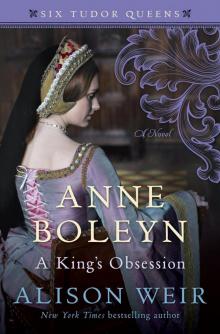 Anne Boleyn: A King's Obsession
Anne Boleyn: A King's Obsession Traitors of the Tower
Traitors of the Tower Mistress of the Monarchy: The Life of Katherine Swynford, Duchess of Lancaster
Mistress of the Monarchy: The Life of Katherine Swynford, Duchess of Lancaster Queens of the Conquest: England’s Medieval Queens
Queens of the Conquest: England’s Medieval Queens Eleanor of Aquitaine: A Life
Eleanor of Aquitaine: A Life Mary, Queen of Scots, and the Murder of Lord Darnley
Mary, Queen of Scots, and the Murder of Lord Darnley Henry VIII: The King and His Court
Henry VIII: The King and His Court Queen Isabella: Treachery, Adultery, and Murder in Medieval England
Queen Isabella: Treachery, Adultery, and Murder in Medieval England Katheryn Howard, the Scandalous Queen
Katheryn Howard, the Scandalous Queen Arthur- Prince of the Roses
Arthur- Prince of the Roses The Wars of the Roses
The Wars of the Roses Eleanor of Aquitaine: By the Wrath of God, Queen of England
Eleanor of Aquitaine: By the Wrath of God, Queen of England Mary Boleyn: The Great and Infamous Whore
Mary Boleyn: The Great and Infamous Whore Jane Seymour: The Haunted Queen
Jane Seymour: The Haunted Queen Anna of Kleve, the Princess in the Portrait
Anna of Kleve, the Princess in the Portrait Lancaster and York: The Wars of the Roses
Lancaster and York: The Wars of the Roses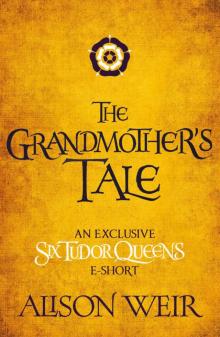 The Grandmother's Tale
The Grandmother's Tale The Princess of Scotland (Six Tudor Queens #5.5)
The Princess of Scotland (Six Tudor Queens #5.5) The Lady Elizabeth
The Lady Elizabeth Katherine Swynford: The Story of John of Gaunt and His Scandalous Duchess
Katherine Swynford: The Story of John of Gaunt and His Scandalous Duchess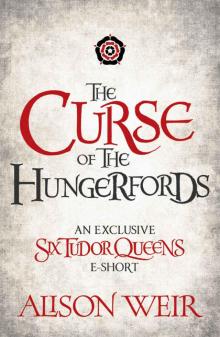 The Curse of the Hungerfords
The Curse of the Hungerfords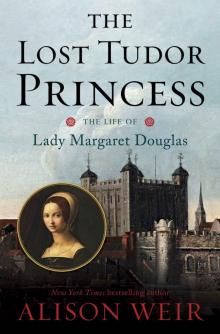 The Lost Tudor Princess: The Life of Lady Margaret Douglas
The Lost Tudor Princess: The Life of Lady Margaret Douglas Eleanor of Aquitaine
Eleanor of Aquitaine Mistress of the Monarchy
Mistress of the Monarchy The Lost Tudor Princess
The Lost Tudor Princess Henry VIII
Henry VIII Anne Boleyn, a King's Obsession
Anne Boleyn, a King's Obsession A Dangerous Inheritance: A Novel of Tudor Rivals and the Secret of the Tower
A Dangerous Inheritance: A Novel of Tudor Rivals and the Secret of the Tower Elizabeth of York
Elizabeth of York Katherine of Aragon, the True Queen
Katherine of Aragon, the True Queen Katherine Swynford
Katherine Swynford Wars of the Roses
Wars of the Roses Queens of the Conquest
Queens of the Conquest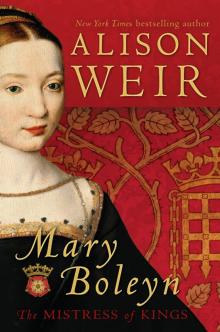 Mary Boleyn
Mary Boleyn Britain's Royal Families
Britain's Royal Families The Tower Is Full of Ghosts Today
The Tower Is Full of Ghosts Today Life of Elizabeth I
Life of Elizabeth I Anne Boleyn A King's Obssession
Anne Boleyn A King's Obssession Lancaster and York
Lancaster and York Jane Seymour, the Haunted Queen
Jane Seymour, the Haunted Queen Queen Isabella
Queen Isabella The princes in the tower
The princes in the tower